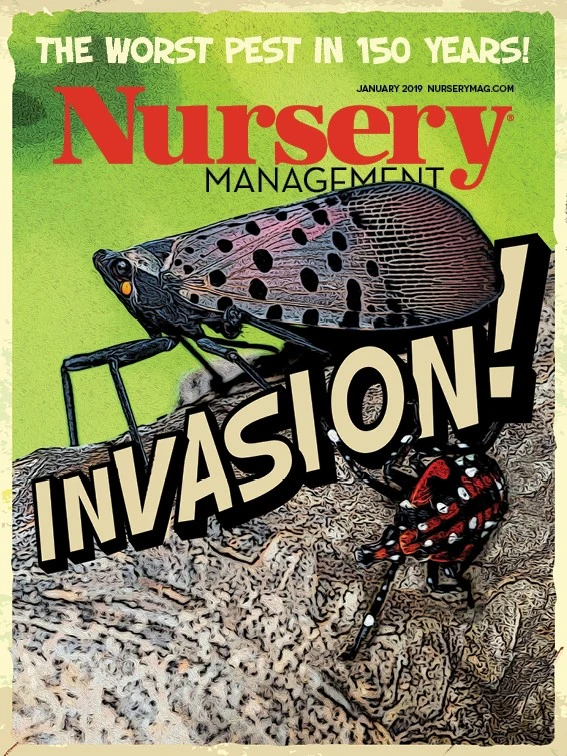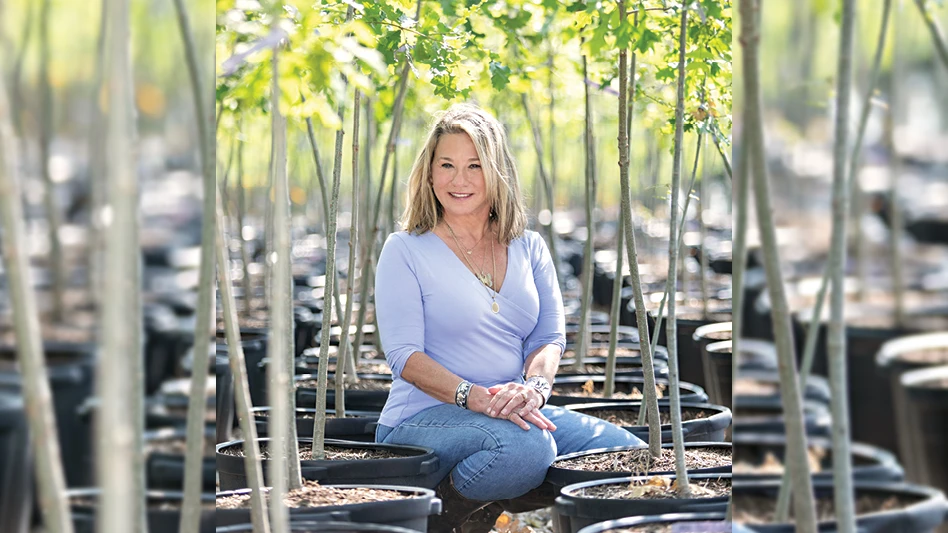
With the increasing popularity in perennial garden plants, producers are growing more perennials, whether in number of containers or varieties. Perennials are also one of the newest categories of greenhouse crops, when compared to cut flowers, potted flowering plants and annuals, when it comes to programming and forcing. This article will focus on the fundamental requirements for forcing perennials into flower.
Juvenility
The first factor controlling perennial flowering is juvenility. Just like animals, plants cannot reproduce (i.e. flower in order to produce seeds) until they are physiologically mature. For some plant species with long juvenile periods, like numerous tree species, the juvenile period can be measured in years. However, for plants like herbaceous perennials, the juvenile period is much shorter. It is so much shorter that years are not used (or needed) to measure the length of the juvenile period; rather, it is measured by the number of leaves or nodes on the plant. The duration of the juvenile period varies by species; some species can flower after forming six or seven leaves, while other species require more than 12 to 15 leaves to flower.
The plant material you use to grow your perennials can influence whether or not your crop is juvenile. For example, a seedling grown in a 50-cell plug tray may be mature and able to respond to flowering cues, whereas a seedling of the same species grown in a 288-cell plug tray may not be. The reason is not that the 50-cell plug has a larger soil volume per se. Rather, it is still due to the leaf number. A plug is finished when it is pullable, meaning it has achieved sufficient growth so when it is pulled out of the plug tray, all the substrate comes along with the root ball. It takes longer for a 50-cell plug to reach a pullable stage compared to a 288-cell plug. Therefore, the larger plugs will have more leaves from the longer production time and be more mature than the smaller seedling.
Juvenility is only an issue for seed-propagated perennials. If you are using cuttings (root or stem-tip) for perennial production, they are already mature, as the cuttings are being taken off mature plants. Additionally, if you are using products like bare-root rhizomes or crowns as starting material, they are also mature and ready to flower.

Vernalization
Once a perennial is mature and can flower, many species require a vernalization or period of cold temperature to flower. Although the requirements for dormancy and vernalization can be met by the same cold treatment, they are different processes (Fig. 1). Dormancy refers to a cessation of development by plant tissue otherwise disposed to develop. On the other hand, vernalization is a cold treatment that results in plants being able to form flowers. Regardless, the cold treatment perennials are given usually satisfies requirements for both vernalization and dormancy.
A successful vernalization requires sufficiently cold temperatures for a sufficient period of time. While the specific temperature and duration for vernalization varies with species, there are some good guidelines that can be followed. Temperatures around 40°F are effective for vernalizing many crops. Similarly, six to eight weeks of cold temperatures satisfies most vernalization requirements; some species can require longer periods of cooling. If plants are insufficiently vernalized (too warm or to cold, not enough time at cold temperatures, etc.) or if they are vernalized but held too long in cold condition, this can increase forcing time and reduce the quality of flowering plants.
Perennials can be cooled in a variety of environments, including outdoors, cool greenhouses and coolers. Outdoor space can be the most economical approach if available, but there is no control over the temperatures during vernalization. Greenhouses have more temperature control than outdoors. But bench space can be valuable and it may be hard to dedicate it to cooling perennials. Coolers give you the best temperature control, but this is also the most expensive option. If you don’t have the facilities to vernalize your perennials or are not interested in doing so, there are some alternative approaches. You can purchase crowns and rhizomes of field-grown plants that have been cooled prior to shipment, much like purchasing case-cooled Easter lily bulbs. Additionally, there are some young plant producers that specialize in growing perennials and offer vernalized plugs and liners that can be planted and forced.
cold treatment can increase the quality of finished flowering plants.”
Other flowering options
Not all perennials need to be vernalized in order to flower. For some species, even though a cold treatment is not required to produce flowering plants, a cold treatment can increase the quality of finished flowering plants and should be provided if space is available and economical. Alternatively, some species do not require a vernalization and there is no improvement in finished crops when provided with one. For these species, a cold treatment should not be provided, unless need to be cooled and grown with other species requiring a vernalization for logistical reasons.
Many perennials also have a photoperiodic flowering response. While there are some day-neutral and short-day species, many perennials flower in response to long days. For those species that flower in response to long days, their responses can be further categorized as obligate (long days required) or facultative (long days not required, but beneficial).
Depending on the time of year, you may need to manipulate day length to control flowering. From mid-fall to mid-spring, the days are naturally short for many species. If you are trying to force species with a long day requirement during these times, you will need to use either night interruption or day-extension lighting to create long day conditions. Whatever your light source (incandescent, light-emitting diode, etc.) is for night interruption or day extension lighting, be sure there is enough far-red light to induce the long day species to flower. Alternatively, if you are forcing short day plants during naturally short days, you may need to provide some long days after cooling to avoid premature flowering and bulk plants to get sufficient vegetative growth. Short days may need to be provided for short day crops beginning at the end of spring through the summer to force flowering during the naturally long days. Pulling blackout cloth over your crop is the only way to create artificial short days when the days are long.
Christopher is an assistant professor of horticulture in the Department of Horticulture at Iowa State University. ccurrey@iastate.edu
Get curated news on YOUR industry.
Enter your email to receive our newsletters.
Explore the January 2019 Issue
Check out more from this issue and find your next story to read.
Latest from Nursery Management
- The HC Companies, Classic Home & Garden merge as Growscape
- Eason Horticultural Resources will now officially be known as EHR
- BioWorks receives EPA approval for new biological insecticide for thrips, aphids, whiteflies
- Ellen Mackenbach-Lakeman appointed new CEO of Dümmen Orange
- Southern Garden Tour sets 2025 dates for trial garden open houses
- New book explores plants that thrive in Rocky Mountains
- American Floral Endowment establishes Herman Meinders Memorial Tribute
- These companies are utilizing plastic alternatives to reduce horticultural waste






